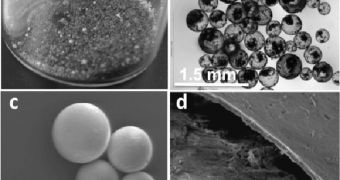Scientists at the University of California in Berkeley (UCB) have recently announced the creation of a new type of microcapsules, similar to the ones used in carbon-free paper, but much improved. They add that the new design is a significant improvement from the other type of microcapsules that burst and release their ink when pressure is applied on them with the tip of a pen. In the new approach, the microcapsules burst when light falls on them, which means that they have a wide range of potential applications, in fields as varied as personal or home care and medicine.
In a scientific paper published in the weekly scientific publication the Journal of the American Chemical Society (JACS), the UCB science team, which was led by experts Jean Frechet and Alex Zettl, reveals that the new type of microcapsules could also be used to create self-healing polymers or plastic in the future, if they are filled with the correct material. In fact, the team adds, this is one of the most promising approaches to creating self-healing paint or concrete to date, and numerous research groups around the globe are working at cracking this issue.
The experts reveal that they have already developed a new approach for the plastic-healing capsules. There will be two types of bubbles in the material, one filled with a monomer, and the other with a catalyst. When an external factor rips through the plastic, the capsules are broken, the two substances flow together and mix, and thus create a plug that nicely seals the formerly damaged area. Being able to do the same thing while responding to light is a major advantage, the two team leaders add, a study abstract shows.
For example, light can be focused in very narrow beams, which can allow scientists to destroy single cancer cells, if drugs are loaded into the microcapsules instead of ink. In printing, light may be used to shine patterns on seemingly empty pieces of paper, which would respond by displaying the same pattern in ink. Each of the capsules in the new approach, the team reveals, is about the size of a grain of sand, and contains a liquid chemical sprinkled with carbon nanotubes (CNT). The study that describes the innovation has been termed “Chemicals On Demand with Phototriggerable Microcapsules.”

 14 DAY TRIAL //
14 DAY TRIAL //